Repeated fires at a GM EV plant have Detroit fire officials demanding changes
General Motors has a problem at Factory Zero, its electric vehicle plant, that Detroit fire officials and local union leaders want fixed.
Since last summer, there have been eight incidents at the plant prompting GM to call the Detroit Fire Department, said Dennis Hunter, Detroit's chief of fire prevention. Hunter did not provide details of the incidents, but indicated many of them were fires.
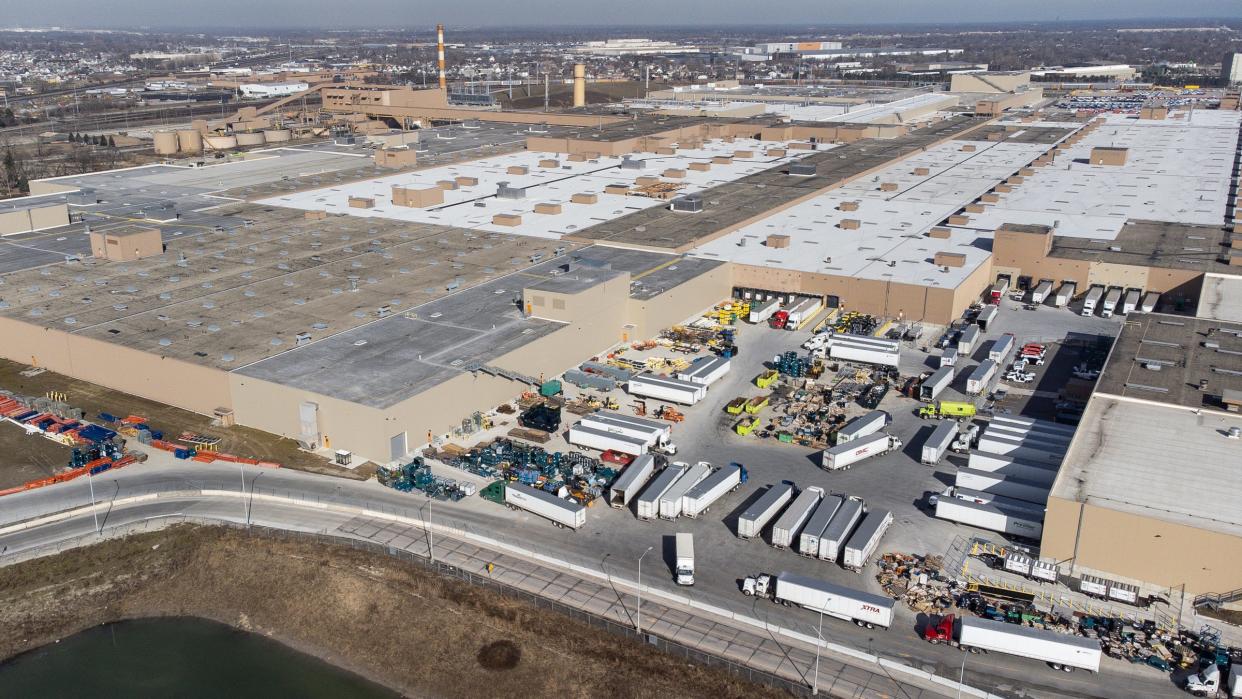
One of them, as the Detroit Free Press reported on Dec. 19, was a three-alarm fire that warranted an evacuation of the building and a halt to production that day of the GMC Hummer EV pickup and SUV, and Silverado EV work trucks. According to the incident report obtained by the Detroit Free Press through a state Freedom of Information Act request, there were 22 fire trucks and 88 firefighters at the scene, many of whom were exposed to "the tremendous hazards of a toxic environment."
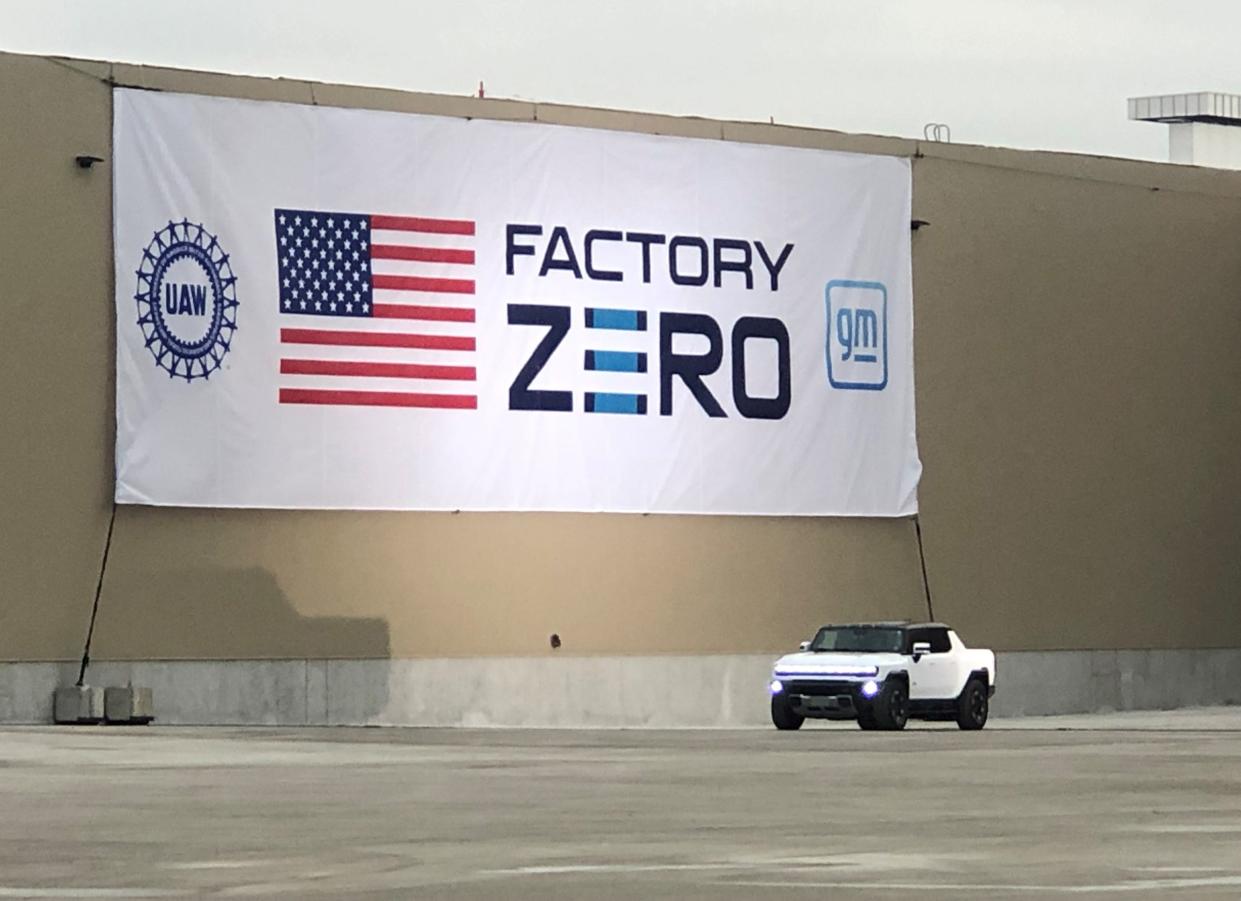
But even before that fire, the city had been pushing GM to invest in equipment to prevent or contain the fires often sparked by the lithium ion battery cells GM handles at the factory, Hunter said.
“GM has a basic plan now, which they sent to us, which is basically an evacuation plan really," Hunter told the Free Press. "What we’ve discussed is investment in containers that are designed to contain and extinguish fires or thermal runoff. We’d like to see some investment in those and investment in monitoring systems.”
Hunter said there are monitoring blankets that can be placed on the battery cells that alert if a cell's temperature is rising so it can be immediately placed outside and cooled before it overheats or ignites.
GM doesn't dispute that it has had to call the fire department eight times since last summer, but clarified that not all of those calls were for fires, some were for medical emergencies and "other incidents" not related to a battery fire, said GM spokesman Kevin Kelly. Also, GM has been working with the city to enhance the company's safety plan and is looking at possible investment in new safety equipment, Kelly said.
The United Auto Workers union also wants to discuss improved safety at the plant with GM leaders.
"The UAW-General Motors Department has, and will continue, to address the health and safety concerns at Factory Zero," Mike Booth, UAW vice president of the GM Department, told the Free Press in an email. "From air quality monitoring to emergency evacuation plans, the UAW is committed to the continued well-being of the membership."
Inside the plant — which straddles Detroit and Hamtramck — one local union leader said the workforce wants improved prevention measures.
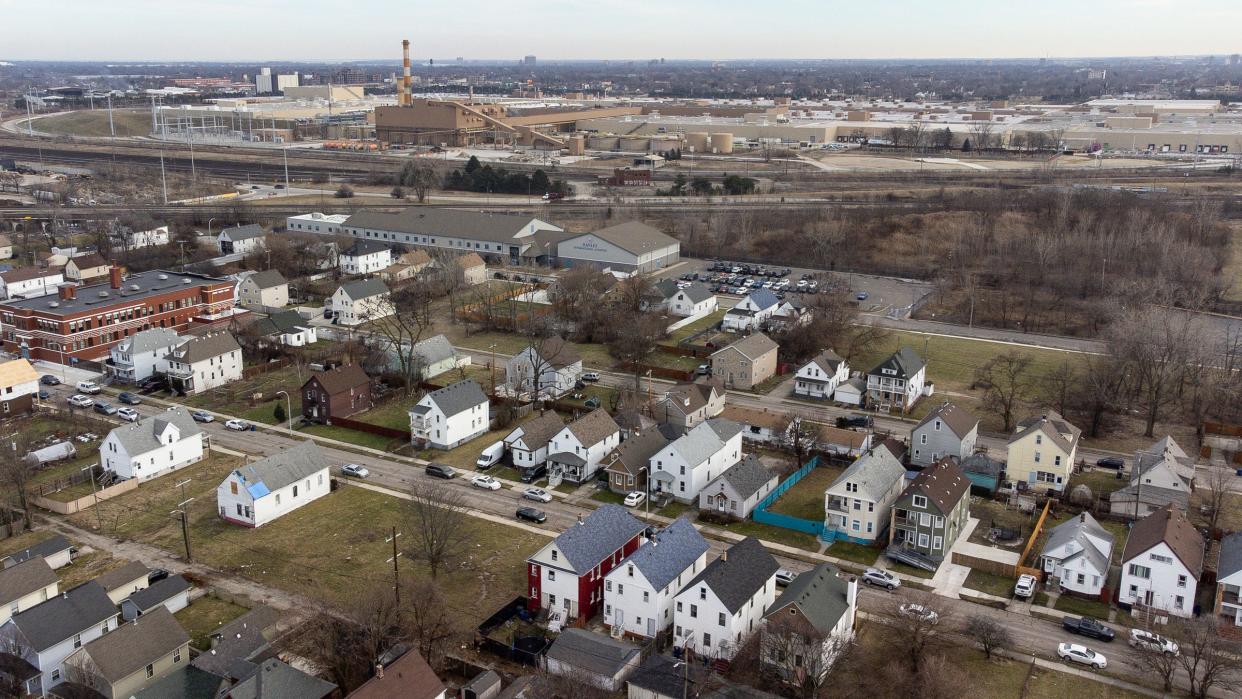
"Our overriding concern is the safety, getting people out. Then, to prevent it," said a union leader who asked to not be identified because they are not authorized to speak publicly. "We've got to get better at the prevention and make that risk as small as possible. I think we’re getting there. Are we going to be 100%? No."
GM's unique problem
GM likely won't get to 100% because the automaker does something unique at Factory Zero that carries an increased risk: assemble lithium ion battery cells into modules that are then put into a battery pack. That battery pack then goes into the EV to power it.
Most automakers use lithium ion battery packs that have already been assembled by a battery cell supplier. But with GM's proprietary Ultium propulsion system, which underpins its newest EVs, GM and its joint venture partner LG Energy Solution make the cells at the Ultium Cells LLC factory in Ohio. GM then ships the cells to an EV plant, in this case Factory Zero, where they are assembled into modules and put into packs before going in the vehicle.
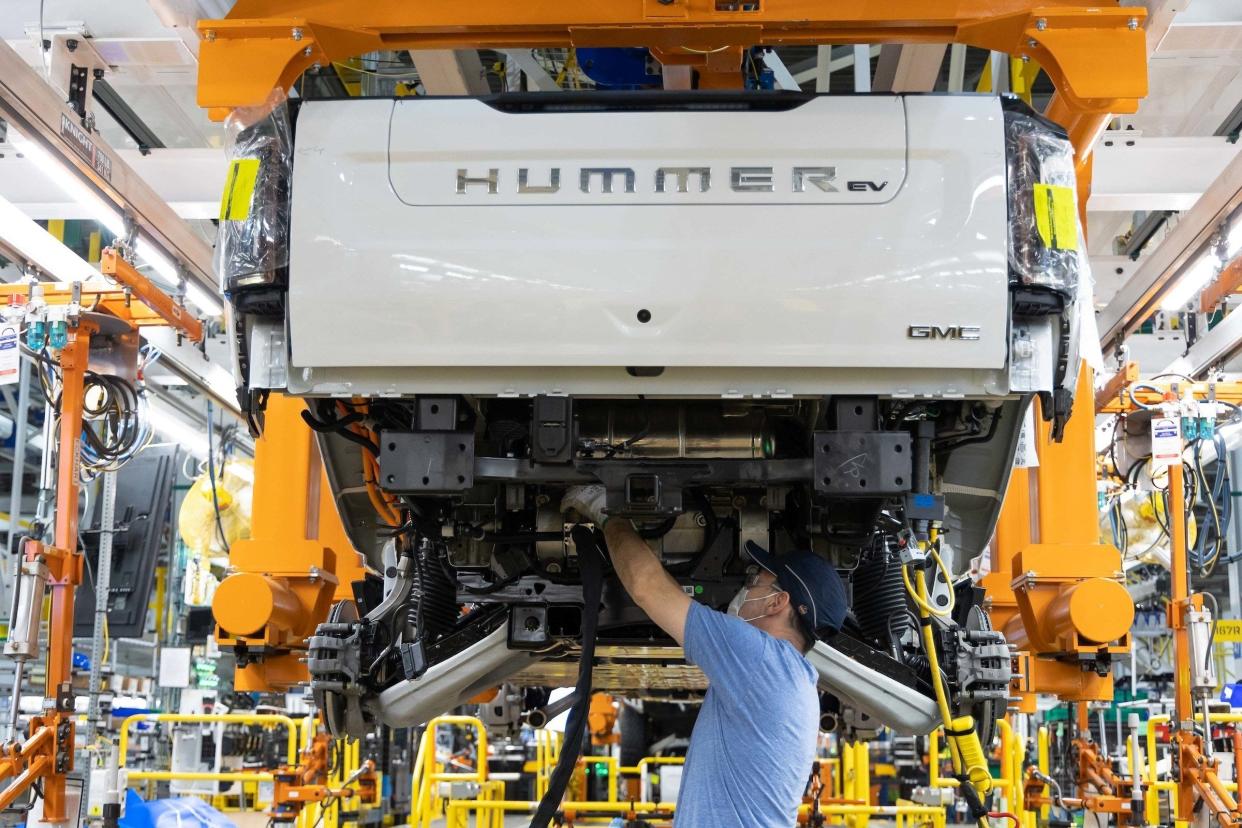
That extra assembly creates the potential for a problem, said a person at GM familiar with the process. This person asked to not be identified because they were not authorized to share that detail publicly.
"Putting the cells into the modules is where the issue is because putting those dozens and dozens of cells into the pack, that’s where you run into the possibility of issues due to complexity of it," this person said. "Once you get everything into a pack, the pack is safe."
GM is studying ways to mitigate the risks involved in that battery module assembly, the person said.
Fires in the factory
There were no serious injuries from fires at the factory, Hunter said. But two of the fires caused a total of more than $1 million in damages, according to two incident reports the Free Press obtained.
According to GM's website, Factory Zero is 4.5 million square feet and about 1,880 people work there.
Shortly after 12:30 p.m. on Oct. 25, a Cruise Origin autonomous vehicle caught fire on the assembly line, according to that incident report. GM had been building Cruise Origin EVs at Factory Zero until GM's self-driving subsidiary Cruise halted production last fall following an Oct. 2 accident in San Francisco where a Cruise vehicle dragged and injured a pedestrian.
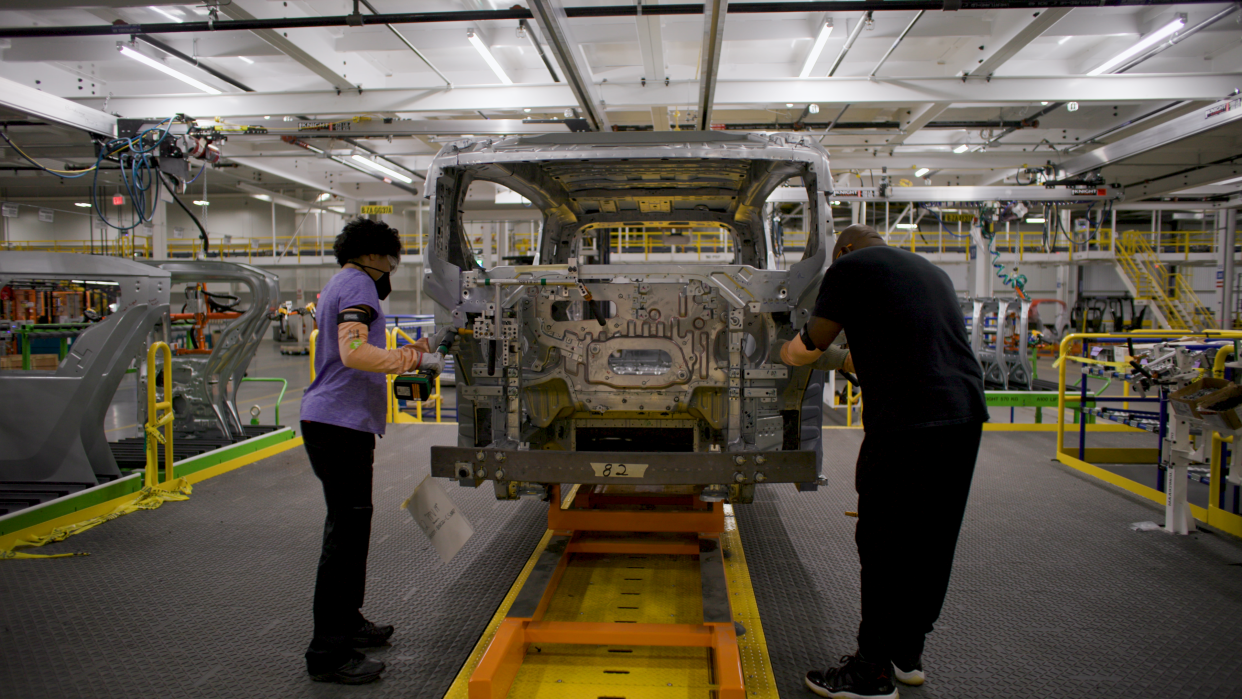
Firefighters extinguished the fire with the help of the building's sprinkler system, but the ventilation system was not working correctly, the report said, which "did not allow smoke to exit the building in a timely manner." The report indicates the building had been evacuated when a hazardous materials team arrived. But the fire consisted of a "battery fire, toxins and smoke was in the air," though monitors in the building detected no measurable levels of contaminants.
The report lists $120,000 in property damages from that one fire. The cause was not a battery, but rather "related to a supplier part that malfunctioned," the person at GM who is familiar with the situation told the Free Press.
Firefighters tackle a 'tremendous blaze'
The far bigger fire on Dec. 19 occurred in a dock area and it did involve lithium ion batteries, as the Free Press reported. GM said that fire was caused by a forklift accidentally puncturing a container with battery materials in it.
About 3:40 p.m., firefighters responded to a call at the plant and arrived there about 10 minutes later to find "multiple battery pallets" on fire, according to the incident report. There were pallets stacked from the floor to almost the ceiling and the fire department described a "large fire in the loading dock" area.
The report said firefighters used "copious" amounts of water and foam along with GM-provided EV car fire blankets to help extinguish the flames. Two of the blankets ignited from the flames. The report described the scene as a "tremendous blaze."
"GM had no way to mechanically vent the environment. Upon being inside the facility, (the hazmat team) noticed that all production line machines were still showing signs of having power to them, the (hazmat team) did not see any lockout tags on any electrical machine. This hazard was not able to be controlled and the sprinkler system was in full extinguish mode," the report said.
After the fire was extinguished, the hazmat teams, "created a game plan as to how to safely remove the pallets that were on fire. GM instructed some firefighters on how to operate their fork trucks so the fire department could remove the hazards as safely as possible. During removal, some of the remaining battery packs did ignite and the others were continually 'off gassing.' Detroit Fire's hazmat team was able to mitigate the hazard as best as possible," the report said.
The fire is estimated to have caused $1 million in combined losses to GM property and damages to the building, according to the report.
GM's Kelly declined to comment on the damages or provide a figure for how much GM is looking to invest to mitigate future fires.
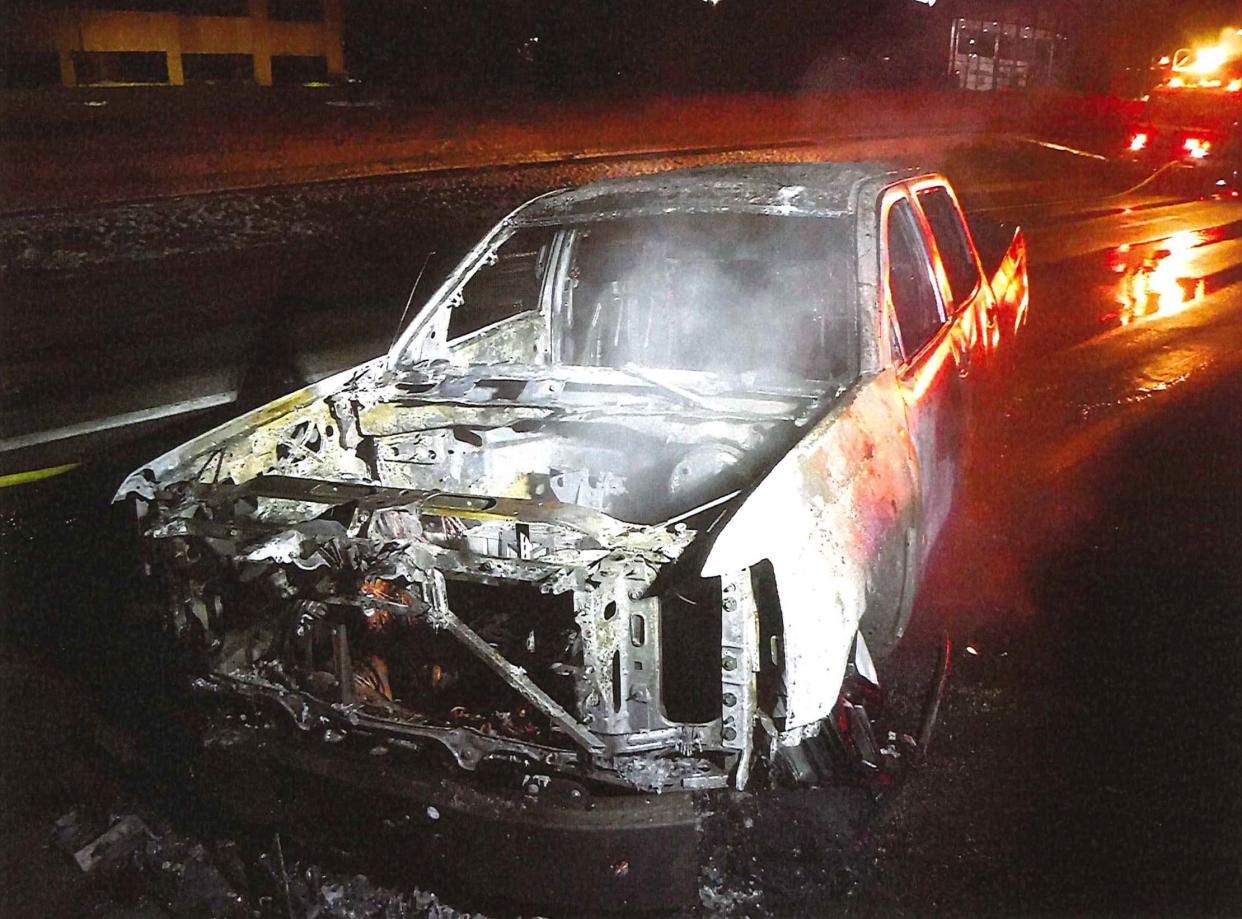
GM's competitors have had EV fires too. In February of last year, Ford Motor Co. temporarily halted production of its F-150 Lightning after one of the pickups ignited on fire, initially spreading to a second vehicle, while in a holding lot in Dearborn. In November, an EV prototype at Stellantis' North America headquarters in Auburn Hills caught fire in a lab, according to Crain's Detroit Business.
In 2021, one of the first all-electric pickups to hit Michigan roads, a Lordstown Motors prototype, became engulfed in an inferno, as the Free Press reported. The three engineers test driving it escaped uninjured and the company blamed the fire on human error in hand-building the prototype.
Detroit could fine GM
The city and GM have met "at least three times" since the fires started last summer, to come up with a better safety plan for GM workers and first responders when there's a battery fire, Hunter said.
He said Detroit could levy violations and fines against GM if necessary, but is working with the company first. If any business is not compliant with the city's fire code, he said, they may receive a violation with a limited amount of time to bring the item into compliance. If the business does not come into compliance, a ticket is issued and fines range around $500 and up, depending on violations, Hunter said. GM is not in violation of any fire codes at the moment, Hunter said, but he added that there has to be "a better response and action solution in case of a EV battery fire."
"We are working hand-in-hand with General Motors to come up with a response plan," Hunter said. "Our guys can put on proper PPE (personal protective equipment) and extinguish a fire. But for the GM workers, they need a better plan. It’s not safe for them to breathe those gasses.”
Another problem for firefighters is that lithium ion battery fires are harder to extinguish than a regular fire, Hunter said. He has been in contact with the International Association of Fire Fighters (IAFF) about the problem, he said, since other automakers make EVs too. The IAFF did not respond to a Free Press request for comment on what sorts of safety protocols it is working on in regard to lithium ion battery fires.
GM's response
GM is working with the city to find a solution that will keep everyone safe, Kelly said in an email to the Free Press.
“As part of our safety protocols, when we are alerted of a potential incident, our first and immediate step is to contact the local fire department to ensure we have the assistance we may need, and we are grateful for their ongoing support," GM said in the statement Kelly sent.
"We also evacuate the plant out of an abundance of caution any time there is an elevated battery cell-related incident for the safety of our workers," the statement said. "We have been in regular dialogue with the leadership of the Detroit Fire Department, including an on-site meeting with them in January, and will continue to work collaboratively on our safety practices. We are actively working on increasing site capability to manage incidents, including the purchase of additional mitigation and response equipment.”
GM is also considering hiring and training its own fire personnel in-house, said the person familiar with the situation, adding that whatever the company learns about increased safety at Factory Zero, it will be applied to its Spring Hill Assembly plant in Tennessee and other EV plants. GM builds the Cadillac Lyriq at Spring Hill Assembly.
A drain on city resources
The reason EV fires are difficult to put out is because when an EV battery malfunctions, it can "kick-start a chemical reaction, known as thermal runaway, that produces a lot of heat in a small space," University of Michigan Dearborn's Assistant Professor of Mechanical Engineering Lei Chen wrote in a Jan. 30 newsletter. "Chemical fires don’t need oxygen to burn and can easily reignite, even after being doused with water," he wrote.
Chen, whose research is partly funded by GM and the U.S. Department of Energy, has studied the cause of thermal runaway, which is the formation of lithium dendrite, a metal that can grow in tree-branch-like patterns along the battery. Lithium dendrite can cause a short circuit that sparks a fire, Chen wrote. Lithium dendrite could form from “overcharging” beyond the battery’s maximum capacity or from defects such as cracks within the battery, he said.
Hunter said firefighters have to put copious amounts of water on a battery fire to extinguish it, which is a drain on city resources.
"Now you’re talking about hours and hours of manpower at one location and firefighters having to rotate in and out, in and out and exposure," Hunter said. "Which is why we’re trying to get GM to have a better plan so when we do get there, we can send one or two engines to extinguish it rather than if it’s out of control and we have to send 15 or 20 firetrucks. That takes away from city resources.”
More: GM's high-level meetings with railroads to get new cars to market faster
More: GM plans to put totally driverless Cruise vehicles back on U.S. roads: Here's how
Contact Jamie L. LaReau: jlareau@freepress.com. Follow her on Twitter @jlareauan. Read more on General Motors and sign up for our autos newsletter. Become a subscriber.
This article originally appeared on Detroit Free Press: Detroit wants GM to make safety upgrades at Factory Zero after fires
